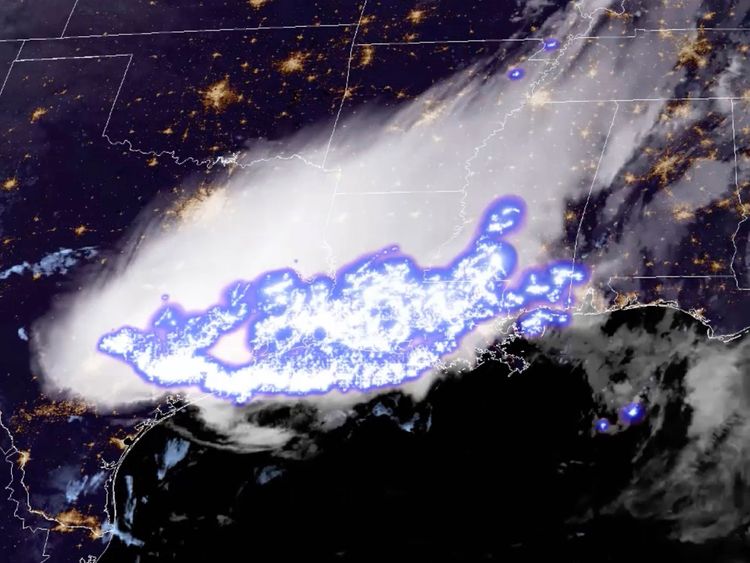
The United Nations announced on Tuesday that a single flash of lightning in the United States about two years ago set a new global record by cutting across the sky for nearly 770 kilometers.
On April 29, 2020, a new record for the longest detected mega flash took place in the southern United States. It stretched 768 kilometers (477.2 miles) across Mississippi, Louisiana, and Texas.
According to the UN’s World Meteorological Organization (WMO), this is similar to the distance between New York City and Columbus, Ohio, or between London and Hamburg, Germany.
That lightning bolt zigzagged 60 kilometers further than the previous record. It was set on October 31, 2018, in southern Brazil.

A new world record for the duration of a lightning flash was also recorded by the WMO’s committee of experts on weather and climate extremes.
On June 18, 2020, a single flash that developed continuously through a thunderstorm over Uruguay and northern Argentina lasted 17.1 seconds. It was 0.37 seconds longer than the previous record. It is set on March 4, 2019, also in northern Argentina.
“These are extraordinary records from single lightning flash events,” Randall Cerveny, the WMO rapporteur of weather and climate extremes, said in the statement.
“Environmental extremes are living measurements of the power of nature, as well as scientific progress in being able to make such assessments,” he said.
Mega flash
In recent years, the technology used to identify the length and duration of lightning flashes has improved substantially. Thereby, allowing for records far bigger than previously possible.
The previous “mega flash” records took place in 2018 and 2019. They were the first to be verified using new satellite lightning imagery technology. Also, they were both greater than double the previous marks set using ground-based data.
“It is likely that even greater extremes still exist, and that we will be able to observe them as lightning detection technology improves,” Cerveny said.
The new record hits occurred in the Great Plains of North America and the La Plata basin of South America. They are hotspots for so-called Mesoscale Convective System (MCS) thunderstorms that permit megaflashes, according to the WMO.
It emphasized that the new record-breaking flashes were not aloof occurrences. But rather occurred during vigorous and large-scale thunderstorms, making them all the more deadly.
“Lightning is a major hazard that claims many lives every year,” WMO chief Petteri Taalas said in the statement.
“The findings highlight important public lightning safety concerns for electrified clouds where flashes can travel extremely large distances.”
The only places that are safe from lightning are large structures with wiring and plumbing, or fully enclosed, metal-topped vehicles, according to the WMO.
Records
The UN organization keeps official global records for temperature, rainfall, and wind, among other meteorological and climate-related statistics.
The WMO Archive of Weather and Climate Extremes houses all of these records.
There are currently two other lightning-related extremes in the archive.
One is for the most people dying by a single direct lightning strike. It occurred in Zimbabwe in 1975. 21 people died as they huddled for cover in a shack that struck.
The other is for an indirect strike in 1994. The lightning likewise struck a group of oil tanks in Dronka, Egypt. Thereby, causing burning oil to flood the town, killing 469 people.






